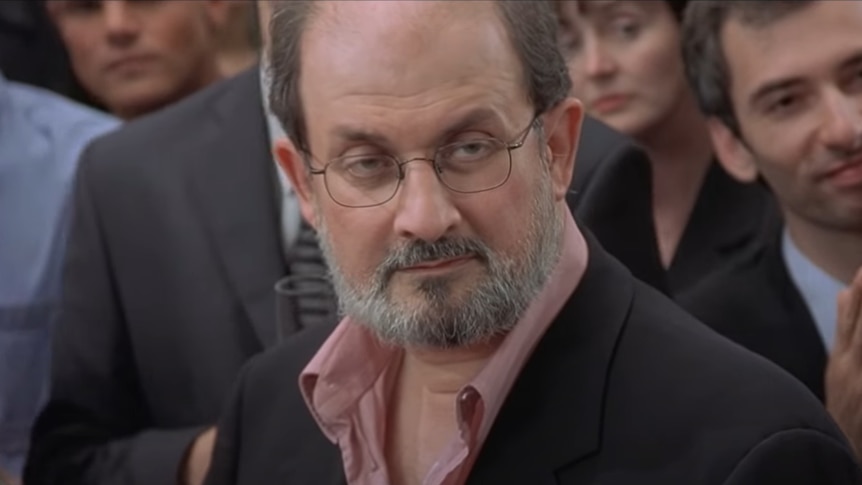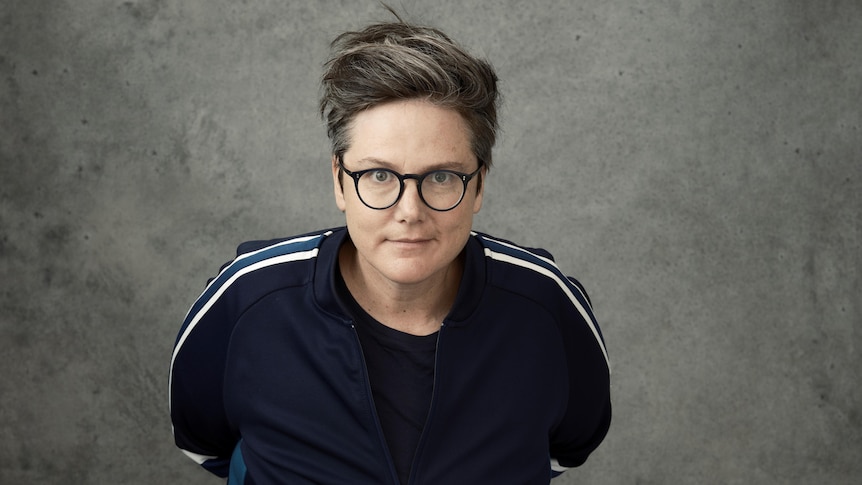Salman Rushdie is recovering with severe, “life-changing” injuries after being stabbed repeatedly before a scheduled public appearance in the US state of New York over the weekend.
He was due to give a lecture at the Chautauqua Institution when a man ran on stage and stabbed him.
Two days after the attack, Rushdie’s son, Zafar Rushdie, said his father was well enough to be taken off a ventilator, had been able to speak and his “usual feisty and defiant sense of humor” was still intact.
Here’s a shortcut guide to Rushdie’s story, why some people wanted him dead and how that made him fodder for sitcom jokes.
Who is Salman Rushdie?
Rushdie is an author, best known for his 1988 novel The Satanic Verses — dubbed by publishing house Penguin Books as one of the most controversial books of modern times.
The 75-year-old was born into a Muslim Kashmiri family in Bombay, now Mumbai, before moving to the UK.
He now lives in New York City as a US citizen.
Rushdie is a self-described lapse of Muslim and “hardline atheist.”
Why would someone want to kill him?
Some Muslims said The Satanic Verses contained blasphemous passages and mocked their beliefs.
The novel draws on elements of the life of Islamic Prophet Mohammed and the origin story of the Qur’an.
Theological scholar Myriam Renaud unpacked some of the criticisms in a piece for the Conversation in 2017:
Rushdie chooses a provocative name for Mohammed. The novel’s version of the Prophet is called Mahound — an alternative name for Mohammed sometimes used during the Middle Ages by Christians who considered him a devil.
And:
In Rushdie’s book, Salman [a character in the novel]for example, attributes certain actual passages in the Qur’an that place men “in charge of women” and give men the right to strike wives from whom they “fear arrogance”, to Mahound’s sexist views.
In 1989, Ayatollah Ruhollah Khomeini, then Iran’s supreme leader, pronounced a fatwa calling upon Muslims to kill Rushdie.
The British government responded by putting him under police protection, with Rushdie going into hiding for nearly a decade.
Rushdie professed his profound regret for causing distress to Muslims while he was in hiding, according to the BBC, but the fatwa remained.
While he has lived a freer existence since Iran’s then-president Mohammad Khatami said the affair was “completely finished” in 1998, there were still many who wanted him dead.
A bounty of more than $US3 million was offered for his murder.
What is he famous for?
Rushdie is an acclaimed author, with a knighthood for services to literature and a Booker Prize under his belt.
But it was the fatwa and the controversy surrounding The Satanic Verses which made him something of a pop culture figure in the 90s.
“There was a moment when American sitcoms couldn’t stop making references to me,” Rushdie said in a 2012 interview on George Stroumboulopoulos Tonight.
“I wasn’t there, but I was in the storyline of Cheers and there was a moment in one of the last episodes of The Golden Girls.”
Rushdie’s name was also dropped a few times in an episode of Seinfeld.
In one episode, which aired in 1993, a character thought a man he met in a health club sauna was Rushdie.
Another character made a joke that Rushdie would “wanna stay in pretty good shape” with so many people after him.
Rushdie didn’t see the episode until long after it aired, but later told comedian Jerry Seinfeld “it was very good.”
“It was funny,” he said.
“If you’re going to be on Seinfeld, I’d hope it’s a good joke.”
Was Salman Rushdie in Bridget Jones’ Diary?
And it is.
He played himself:
loading
According to an extract from his memoir published by the Sydney Morning Herald in 2012, Bridget Jones’s Diary author Helen Fielding set up his cameo in the 2001 film by phoning him and asking: “How would you like to make a fool of yourself?”
More recently, Rushdie also played himself in an episode of Curb Your Enthusiasm in 2017.
He has 11 acting credits and dozens of television appearances to his name on IMDb.
ABC/Wires
.

